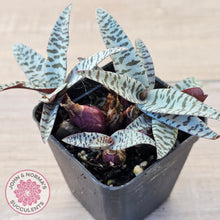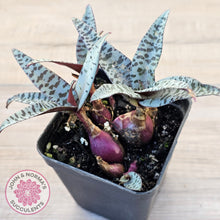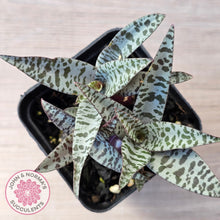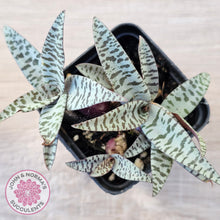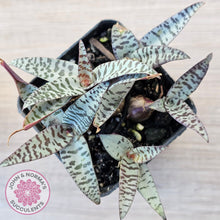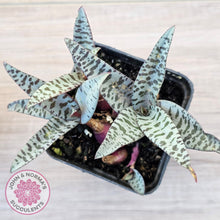
Ledebouria socialis Origin and Historical Aspects
Originating from the Eastern Cape Province of South Africa, Ledebouria socialis, commonly known as Silver Squill, Wood Hyacinth, Leopard Lily, or Silver Leopard, is exclusively found in this region, presenting itself prominently from Hankey to East London. Here, its preferred habitats include evergreen woodlands and scrub forests nestled within river valleys. The genus name, Ledebouria, honors German-Estonian botanist Professor Carl Friedrich von Ledebour. Interestingly, the term 'socialis' in its nomenclature points to its gregarious growth habit. Delving into its history, the species was originally christened as Scilla socialis in 1896 but underwent reclassification to Ledebouria in 1970 by J.P. Jessop. Among the Ledebouria species, Ledebouria socialis stands out as a crown jewel. Its striking beauty and fascinating history make it a treasured favorite among rare plant collectors, bulb enthusiasts, and pot plant aficionados around the globe.
Unique Characteristics and Habitat
Distinguished by its dense and gregarious nature, Ledebouria socialis boasts red above-ground bulbs that proliferate to form close-knit colonies. Its leaves, typically spanning 50-70 mm in length, captivate with a silvery hue, highlighted by green to brown spots on top. The leaf's underside varies, presenting shades ranging from green to deep purple. As summer graces the wild terrains of South Africa, typically from October to November, this bulbous beauty unveils its sparse inflorescences, with each bulb producing solitary and lightly-flowered spikes. The flowers, predominantly green and white, are adorned with a touch of pink, showcasing striking purple stamens.
Ecology and Adaptations
Despite its tropical allure, Ledebouria socialis thrives in rather arid regions, often subjected to prolonged droughts. Its resilience is evident in its ability to shed leaves during droughts, lying dormant until favorable conditions prevail. The bulb's above-ground nature (epigeal) might be an adaptation to the shallow, stony soils of its native habitat. The delicate nodding flowers, while devoid of discernible scent to humans, attract a myriad of small insects. Porcupines have been noted for digging out and feasting on its bulbs. Seed distribution is believed to occur through water wash, given their small, black, and rounded nature.
Cultivation and Care
Favored by many as a houseplant, the silver African hyacinth is lauded for its ease of cultivation. Its adaptability is evident as it flourishes both within pots and gardens outside its native terrain. For optimal growth, a well-drained, sandy loam soil enriched with compost or cattle manure is recommended. Its care regimen during summers entails generous watering, ensuring good drainage. In winters, while they may naturally go dormant, in cultivation they can be kept evergreen with the right care. For those in colder climes, transferring them to warm greenhouses during winters is beneficial. They make a charming addition to succulent rockeries and are a favorite among bonsai and miniature garden enthusiasts.
When it comes to propagation, separating individual bulbs offers a straightforward approach. However, for those seeking variability, propagation from seeds is the way forward. Seed sowing should ideally be done in spring or summer, with flowering achieved within two to three years post-germination.
To sum up, Ledebouria socialis, with its rich history, captivating appearance, and resilient nature, makes for a perfect addition to any botanical collection. Whether you're a novice gardener or a seasoned plant enthusiast, its allure remains undiminished.
Ledebouria socialis plants for sale shown in 70mm pots. You will receive same or similar plants to those shown in the images 2 onward. First image for display only. Colours will vary depending on time of year and growing conditions.
First time customers... Please read our Shipping Guide, in top or bottom menu, before placing your order.
Please Note:
- All plants are sent bare rooted with no pots and soil, or minimum soil only.
- Due to the drying process necessary for sending plants through the mail, plants may look slightly different than images shown on our website
- Some plants, may look wrinkled when they arrive, may be somewhat limp, or soft to the touch. This is normal as they have been dried out for for a number of days before shipping to avoid rotting in the mail.
- Succulents are very hardy plants and they will recover quickly, providing you unpack them as soon as you receive them follow some simple care instructions you will find with your order.
If you have any questions or concerns at all, please message us via our Facebook page at John & Norma's Succulents for the fastest Response.















